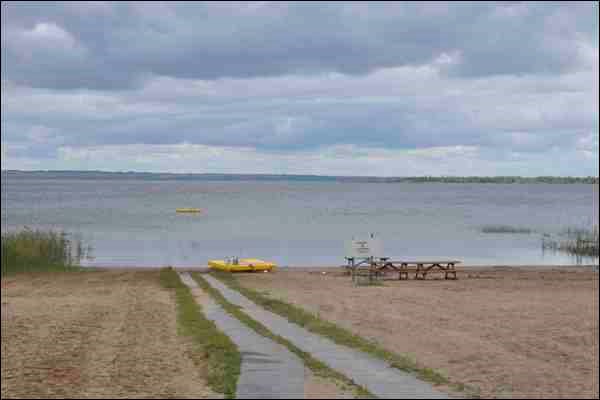In 2012, when the federal government put an end to its five-year funding commitment to the Redberry Lake Biosphere Reserve, questions loomed about whether the site could sustain itself.
The reserve sustained collateral damage when environmental cuts were made in the 2012 Canadian budget. Redberry Lake received four years worth of funding before the agreement was axed last March.
Not only was federal funding cut, the province chose not to renew its funding agreement with the biosphere in 2010 because they were getting federal funding.
"Our thoughts, and everything we're hearing, as long as this [federal] government is in power then [we] probably won't get funding. We basically quit," said John Kindrachuk, the executive director.
He and Susanne Abe, the communications co-ordinator, said programs haven't changed because of the lack of funding, but it now costs money to visit the biosphere.
There's a fear that at a cost of $10 per person, attendance might slow down. Where it used to be a cheap, educational field trip, the cost to visit the reserve now adds up, meaning the possibility of fewer visitors.
So, can they keep operating under this model?
"Depends on the winter," said Abe.
Finding funds to heat and maintain their current building is no easy feat. Kindrachuk said they've been working with a consultant to come up with a strategy for long-term funding, but they don't have time to put the strategy in place because employees are busy doing contract work just to stay employed.
Of the 16 biosphere reserves in Canada, not all have the luxury of a building on-site like Redberry Lake does, but Kindrachuk and Abe think losing it would take away from the value of the site.
"We would lose the connection with visitors, with people in the area," said Abe. "This building definitely needs some financial support."
If the relationship with visitors is compromised, that could mean fewer people going to the biosphere, which takes away the only source of funding remaining.
Caught on a slippery slope under the current model, Kindrachuk is looking to corporate funding as the ultimate solution. The building could be named after the sponsor, similar to the Credit Union CUPlex in North Battleford. The problem is that the biosphere, located outside of Hafford, is far from large corporations.
'We have to find one from out of the area that sees the big picture that, 'Hey, what they're doing could affect us wherever we are, too,'" said Kindrachuk.
That's the most important battle for the reserve to fight - showing their value throughout the province, not just their area. As the only biosphere reserve in Saskatchewan, Kindrachuk said they can be used as a guinea pig for research than can be applied province-wide.
More frustrating for Kindrachuk and Abe is witnessing the value other countries put into their biospheres. Redberry Lake has hosted researchers from Japan, Ukraine and Germany who are using the biosphere as a model as they look to found their own. Those countries are seeing much more support from their respective governments.
Germany is paying for 10 delegates to attend EuroMAB, a Canadian and European biosphere reserve conference being held in Ontario in October.
"The government is paying for them to come. We can barely scrape by getting one person from here going to Ontario to support a conference that we're hosting," said Kindrachuk. "It's quite confusing how some governments see the importance of them and ours just don't."
What separates the Redberry Lake biosphere from the ones being developed elsewhere, aside from government support, is that the Redberry Lake reserve has local people running it. Kindrachuk said that's why they get used as a model around the world.
"It's quite interesting that we are the model of what a biosphere reserve is supposed to be, but we have no support to do it," he said.
MP of Saskatoon-Wanuskewin, Maurice Vellacott, couldn't be reached for comment.
Canada is blessed with an abundance of green space, which, Abe and Kindrachuk believe, is why the importance of biosphere reserves is overlooked.
"The developed countries, they are losing what we have. They have lost it already, now they see the importance of protecting it," said Kindrachuk.
At this time, neither Abe nor Kindrachuk foresee a change of heart provincially or federally. The plan will be to move on with the push for corporate assistance as they fight to maintain their reserve.

.png;w=120;h=80;mode=crop)


